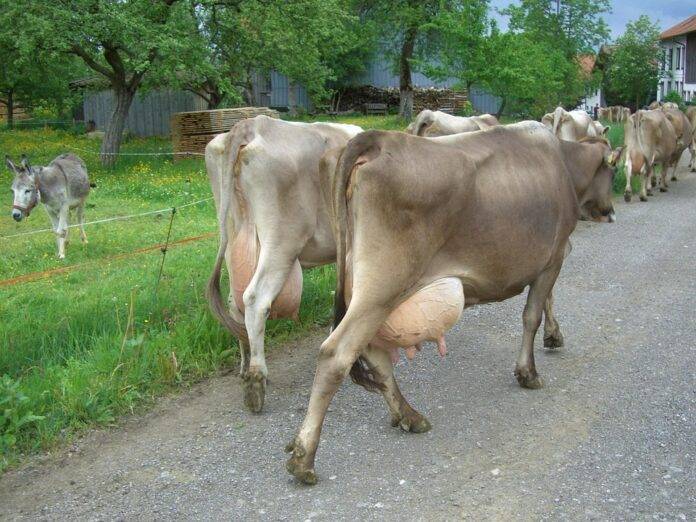Introduction
Donkey milk, cow milk, goat milk, and sheep milk are all popular dairy products consumed worldwide. Each type of milk has its own unique nutritional profile, taste, and benefits. In this report, we will compare the nutritional content of donkey milk with that of cow, goat, and sheep milk to understand their differences and similarities.
Donkey Milk Nutritional Profile
Protein Content
Donkey milk is lower in protein compared to cow, goat, and sheep milk. It contains about 1.5-1.8% protein, while cow milk has around 3.2-3.6%, goat milk 3.1-3.5%, and sheep milk 5.4-6% protein content.
Fat Content
Donkey milk has a lower fat content compared to cow and sheep milk but is similar to goat milk. It contains around 1.5-1.8% fat, while cow milk has 3.6-4.6%, goat milk 3.5-4.5%, and sheep milk 6-8% fat content.
Carbohydrate Content
Donkey milk has a higher carbohydrate content compared to cow, goat, and sheep milk. It contains about 6.5-7.5% carbohydrates, while cow milk has 4.6-5.2%, goat milk 4.4-4.9%, and sheep milk 4.9-5.6% carbohydrate content.
Cow Milk Nutritional Profile
Protein Content
Cow milk is higher in protein compared to donkey, goat, and sheep milk. It contains around 3.2-3.6% protein, while donkey milk has 1.5-1.8%, goat milk 3.1-3.5%, and sheep milk 5.4-6% protein content.
Fat Content
Cow milk has a higher fat content compared to donkey and goat milk but is lower than sheep milk. It contains around 3.6-4.6% fat, while donkey milk has 1.5-1.8%, goat milk 3.5-4.5%, and sheep milk 6-8% fat content.
Carbohydrate Content
Cow milk has a lower carbohydrate content compared to donkey milk but is similar to goat and sheep milk. It contains about 4.6-5.2% carbohydrates, while donkey milk has 6.5-7.5%, goat milk 4.4-4.9%, and sheep milk 4.9-5.6% carbohydrate content.
Goat Milk Nutritional Profile
Protein Content
Goat milk has similar protein content to cow milk but is higher than donkey and sheep milk. It contains around 3.1-3.5% protein, while donkey milk has 1.5-1.8%, cow milk 3.2-3.6%, and sheep milk 5.4-6% protein content.
Fat Content
Goat milk has a similar fat content to cow milk but is lower than sheep milk and higher than donkey milk. It contains around 3.5-4.5% fat, while cow milk has 3.6-4.6%, sheep milk 6-8%, and donkey milk 1.5-1.8% fat content.
Carbohydrate Content
Goat milk has a similar carbohydrate content to cow and sheep milk but is lower than donkey milk. It contains about 4.4-4.9% carbohydrates, while cow milk has 4.6-5.2%, sheep milk 4.9-5.6%, and donkey milk 6.5-7.5% carbohydrate content.
Sheep Milk Nutritional Profile
Protein Content
Sheep milk has the highest protein content among donkey, cow, and goat milk. It contains around 5.4-6% protein, while donkey milk has 1.5-1.8%, cow milk 3.2-3.6%, and goat milk 3.1-3.5% protein content.
Fat Content
Sheep milk has the highest fat content among donkey, cow, and goat milk. It contains around 6-8% fat, while donkey milk has 1.5-1.8%, cow milk 3.6-4.6%, and goat milk 3.5-4.5% fat content.
Carbohydrate Content
Sheep milk has a higher carbohydrate content compared to cow and goat milk but is similar to donkey milk. It contains about 4.9-5.6% carbohydrates, while cow milk has 4.6-5.2%, goat milk 4.4-4.9%, and donkey milk 6.5-7.5% carbohydrate content.
Industry Insights
The dairy industry is a multi-billion dollar industry, with companies like Nestle, Danone, and Lactalis dominating the market. These companies produce a wide range of dairy products, including milk, cheese, yogurt, and butter. The demand for dairy products is expected to increase in the coming years, driven by the growing population and rising disposable incomes.
Conclusion
In conclusion, donkey milk, cow milk, goat milk, and sheep milk all have their own unique nutritional profiles. Each type of milk has its own benefits and can be consumed based on individual preferences and dietary requirements. It is important to consider the nutritional content of each type of milk when making dietary choices.




